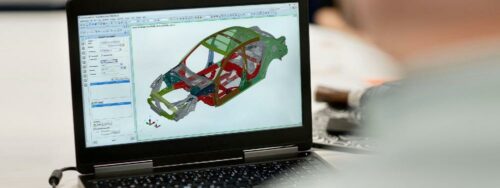KuppingerCole Unveils Security Fabric Concept for Modernizing Cybersecurity Architecture
“You have to think of the cybersecurity architecture of any given organization as a piece of cloth or fabric in which all the ‘threads’ or components are integrated and connected, working together as a single entity. The goal is to achieve consistent and uninterrupted security for everything from end to end while keeping an eye on all your tools,” says Christopher Schuetze, Lead Analyst and Director Practice Cybersecurity at KuppingerCole.
The Security Fabric is designed to help companies connect all types of identities to devices, data, applications, systems, and networks and thus create an open cybersecurity architecture that meets future requirements.
Solving challenges for convenience’s sake
Modern IT is characterized by a myriad of access points, hybrid deployment models, Software-as-a-Service solutions, remote working, bring your own device (BYOD) policies, and ever-changing regulatory requirements. Most of these are aimed at promoting user convenience, but all create challenges that require a flexible approach to security architecture. “While convenient solutions are easy to deploy, they are difficult to govern centrally and defend against malicious actors,” Schuetze adds.
Five-pronged approach to a future cybersecurity architecture
KuppingerCole recommends that companies take a five-pronged approach to set up a well-defined security architecture with governance and security management at its core. The remaining four elements are data protection, attack detection, incident response, and recovery.
While protection is crucial, it should not create a false sense of security. Attacks will inevitably occur, which means detecting them is just as important as protecting against them. Since cybercrime is an industry of its own, attacks on companies increase in number and intensity, and every successful business will ultimately become a target of phishing emails, hacking attacks and the like. Therefore, companies should have a strategy in place that details how to respond to an attack on their systems. Finally, it is of utmost importance that companies have the capacity to recover and get vital IT and other core systems up and running again.
"Having a Security Fabric in place will help organizations improve their portfolio, their spending, and their cybersecurity because it takes a business-centric view of the things they really need. KuppingerCole provides specialized support to help organizations to improve their security as well as their security architecture by using the Security Fabric,” concludes Christopher Schuetze.
To contribute to a safer world, KuppingerCole will release further content explaining the Security Fabric concept further and how it can be applied. For more information read this research report, or listen to this episode of the Analyst Chat podcast.
KuppingerCole, founded back in 2004, is a global, independent analyst organization headquartered in Europe. We specialize in providing vendor-neutral advice, expertise, thought leadership, and practical relevance in Cybersecurity, Digital Identity & IAM (Identity and Access Management), Cloud Risk and Security, and Artificial Intelligence, as well as for all technologies fostering Digital Transformation. We support companies, corporate users, integrators and software manufacturers in meeting both tactical and strategic challenges and make better decisions for the success of their business. Maintaining a balance between immediate implementation and long-term viability is at the heart of our philosophy.
KuppingerCole Analysts AG
Wilhelmstr. 20-22
65185 Wiesbaden
Telefon: +49 (211) 237077-0
Telefax: +49 (211) 237077-11
http://www.kuppingercole.com
Marketing Manager Communications
Telefon: +49 (211) 237077-42
Fax: +49 (211) 237077-11
E-Mail: mg@kuppingercole.com
![]()




